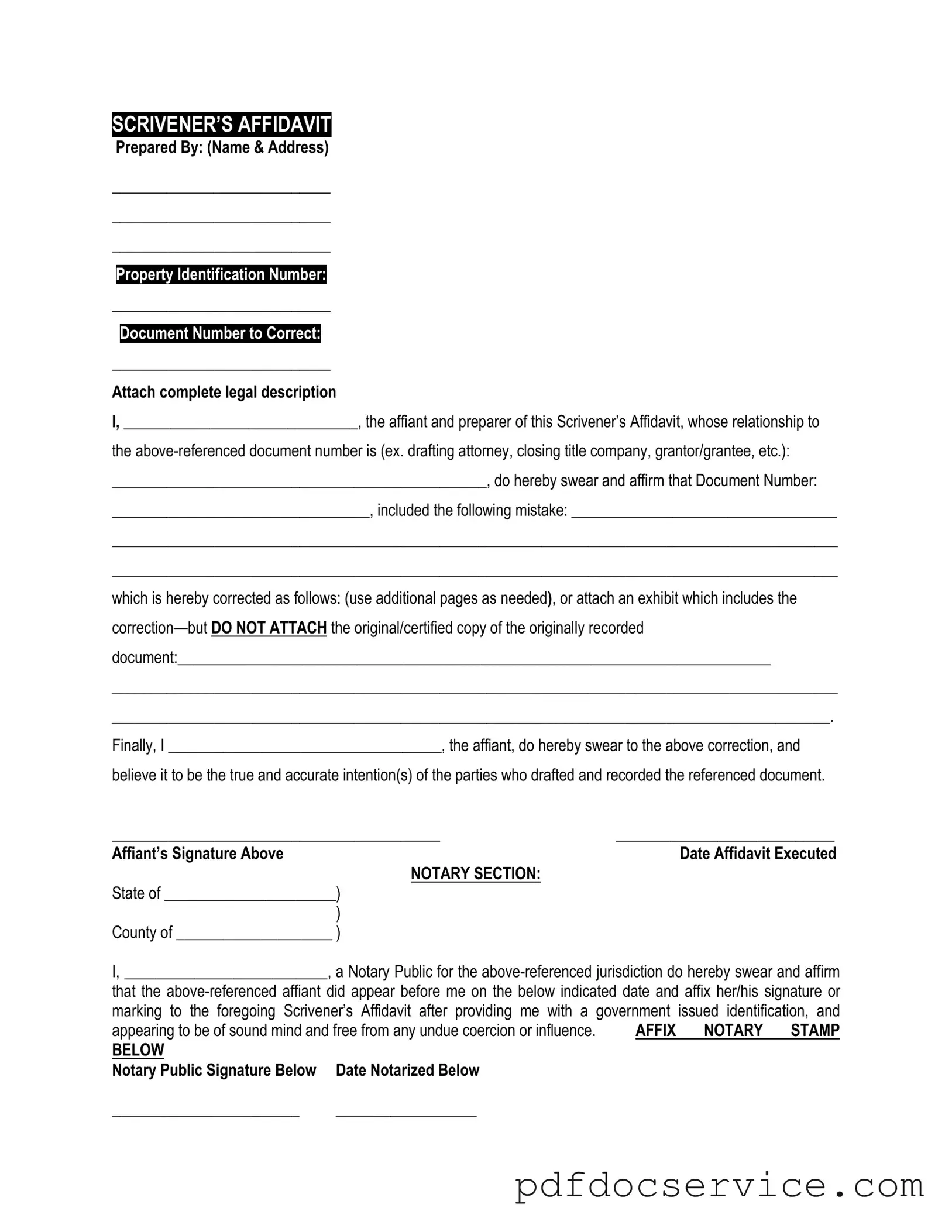What is a Scrivener's Affidavit?
A Scrivener's Affidavit is a legal document used to correct or clarify a mistake in another document, typically a deed or a will. It serves to explain discrepancies that may have occurred during the drafting process, ensuring that the original intent of the parties involved is accurately reflected.
When should I use a Scrivener's Affidavit?
You should consider using a Scrivener's Affidavit when you notice errors in legal documents that could affect their validity. Common situations include:
-
Typographical errors
-
Incorrect names or dates
-
Missing information that was intended to be included
By addressing these issues through a Scrivener's Affidavit, you help ensure that the document accurately represents the intentions of the parties involved.
Who can prepare a Scrivener's Affidavit?
Typically, a Scrivener's Affidavit is prepared by an attorney or a legal professional. However, in some cases, individuals may draft their own affidavits, provided they understand the requirements and implications of the document. It is advisable to seek legal guidance to ensure accuracy and compliance with local laws.
A Scrivener's Affidavit should include the following information:
-
The name of the affiant (the person making the affidavit)
-
A description of the original document and the specific errors being corrected
-
The correct information that should replace the errors
-
A statement affirming the intent of the parties involved
-
The date and signature of the affiant, along with a notary's acknowledgment
Including these elements helps ensure that the affidavit is valid and effective.
Is a Scrivener's Affidavit legally binding?
Yes, a Scrivener's Affidavit is legally binding once it is properly executed. This means it must be signed by the affiant and notarized. However, the effectiveness of the affidavit may depend on the jurisdiction and the specific circumstances surrounding the original document.
How do I file a Scrivener's Affidavit?
Filing a Scrivener's Affidavit typically involves the following steps:
-
Prepare the affidavit with the necessary information.
-
Have the affidavit signed in the presence of a notary public.
-
File the affidavit with the appropriate court or agency, if required.
Check local regulations to determine if filing is necessary in your case.
Can a Scrivener's Affidavit be challenged?
Yes, a Scrivener's Affidavit can be challenged if there are disputes regarding the accuracy of the corrections or the intent of the parties involved. If someone believes the affidavit misrepresents the original document, they may contest its validity in court.
How long does it take to process a Scrivener's Affidavit?
The processing time for a Scrivener's Affidavit can vary based on several factors, including the jurisdiction and whether the affidavit needs to be filed with a court. Generally, once the affidavit is signed and notarized, it is effective immediately. However, if it must be filed with a court, processing times can vary widely.
Do I need a lawyer to use a Scrivener's Affidavit?
While you do not necessarily need a lawyer to use a Scrivener's Affidavit, consulting with one is highly recommended. An attorney can help ensure that the affidavit is correctly prepared and that it meets all legal requirements, minimizing the risk of future disputes.
